While the Ford Mustang launched in 1964, today's Mustang can arguably trace its performance
roots to the third generation model that was released in 1979. At the time, Ford needed
to move beyond the Pinto-based Mustang II and keep an eye on cost savings. While
engineered initially in the early 1970s for the pending Ford Fairmont and Mercury Zephyr
sedans, the Fox Body platform soon became the third generation car's underpinnings. The
Fox Body Mustang is born and lasts through 1993. Even today, these Mustangs still enjoy
popularity with enthusiasts and tuners alike.
Father Of The Fox Body Notchback And
Hatchback
Notchback vs Hatchback
Mustang Notchback and Hatchback
Carryover
A Few Steps Back And A Few Step
Forward
The Fox Body Enters Its Final Years
This next-generation Mustang faced an identity crisis during development. A 2013 MotorTrend
article reports that Ford designers were tasked with creating a look totally different
from the Mustang II while company honcho Henry Ford II persisted with demands for
carryover elements such as the vertical front end. At this point, the story recounts,
the company assigns three different design teams, including one from Italy, to work on
the Mustang project. The resulting concepts included squared-off designs and a station wagon variant. Jack
Telnack, who previously spent time with Ford in Australia and Europe, moves to Dearborn
in the mid-1970s and becomes the chief designer of the Mustang. Incorporating his European design experience and the Fox Body chassis parameters, Telnack
sets out to crack the Ford design mold. "I consider the '79 Mustang a breakthrough car.
It was the first project I worked on when I returned from Europe. It was such a
departure from anything we were doing here," shares Telnack in a HowStuffWorks article.
He continues with how he had to sell the Mustang's aero design to Henry Ford II. Telnack
would later go on to develop the jelly-bean style of the 1986 Ford Taurus. The Fox Body platform enjoys popularity among Mustang fans even into the 21st century.
Enthusiasts appreciate the easy-to-modify design and the relatively lighter weight when
compared to today's Mustangs. At the same time, the debate continues over which body
style is better: notchback vs. hatchback. From a performance standpoint, the notchback offers two distinct advantages over the
hatchback: Reduced weight — The curb weight of a 1979 base model
notchback is 2,516 pounds, 34 pounds less than the hatchback. Following
the exterior refresh for 1987, the weight difference was more
significant, with the notchback weighing 2,724 pounds, 58 pounds less
than the hatchback. The weight differences aren't that substantial, but
in a race, every ounce matters. Better body stiffness — The Fox Body Mustang is well known,
or perhaps notorious, for body flex. While there is no hard data to
support it, anecdotal feedback via online comments reports that the
notchback benefits from a more rigid body than its hatchback
counterpart. Not to be forgotten, the hatchback had a clear advantage over its trunk-equipped sibling with
special editions—something that may appeal to the Mustang collector. Memorable
variations, including the Indy Pace Car edition, SVO, and SVT Cobra, were only available
in hatchback form. Also, the hatchback feature itself is debatably more utilitarian than
a trunk. The debut of the Fox Body Mustang for the 1979 model year saw the carryover of the two-door
notchback and three-door hatchback body styles from the Mustang II. A convertible body
style would become available in 1983. Thanks to the new platform, which encompassed a
MacPherson front suspension, the new ‘Stang was about 200 pounds lighter than its
predecessor. Both body styles were each offered in a base and Ghia trim at launch. The Ghia was an upscale
appearance package that included wire wheel covers on a Mustang! The 302ci 8-cylinder
(the original 5.0L), carried over from the Mustang II, was a $514 option. The notchback's starting price was $4,494, while the hatchback was an extra $334. Air
conditioning was also an option for $484. A four-speed manual was standard on all
models. The $1,200 Cobra option, however, was only available on the hatchback. This performance
edition included a turbocharged version of the standard 2.3L 4-cylinder engine and an
upgraded suspension and brakes. You could splurge for another $78 for the Cobra version
of the Trans Am screaming chicken sticker. In a brilliant marketing move, Ford negotiated a deal for the new Mustang to become the
official pace car of the 63rd Annual Indianapolis 500. This helped the company sell
almost 11,000 pace car replica Mustangs. Offered in exclusive pewter and black paint
with a commemorative decal package, the special edition was available only with the
hatchback and offered a choice of 5.0L or 2.3L turbo power plant. The tremendous first-year success of the Fox Body Mustang—almost 370,000 units sold—couldn't
stop the impact of new federal emission standards. For 1980, the 302ci V-8 is dropped in
favor of a 255ci small-block producing a "blistering" 119 hp —less horsepower than a
current Kia Rio. 1981 sees the small-block V-8 output decline even further to 115 hp.
The turbo four-cylinder is also eliminated this year. These years saw a carryover of the Ghia and Cobra trims with two exceptions: 1980 M81McLaren Mustang — A high-performance version
hatchback, the M81 featured a modified 2.3L turbo engine and other
upgrades that kicked output to 175 hp. The $25,000 sticker caused only
five M81 cars to be sold this year. While this edition was a single-year
bust, it laid the groundwork for Ford's special vehicle options (SVO)
unit. 1981 Mustang S Coupe — Available only on the notchback body
style, the S Coupe was the polar opposite of the M81. It offered fewer
standard features and a $500 lower price than the base notchback. While 1982 saw the Cobra package go away, Mustang performance enthusiasts rejoiced with the
rebirth of the Mustang GT legend. Thanks to a reworked 5.0L V-8 and dual carburetors,
the engine pushed out 157 hp. T-tops, that classic 80's option, becomes available on a
Mustang for the first time. The S Coupe and Ghia trim are tossed this year, too. Other
Mustangs are now offered in three trim levels with gradually increasing standard
equipment: The base L trim is available only with the notchback. At the same time, the
more upscale GL and GLX can be ordered with either body style. In 1982, the California Highway Patrol ordered 400 Fox Body Mustangs with a Special Service
Package not available to the general public. Dubbed the Mustang SSP, these 394
notchbacks and six hatchbacks offered a high-speed pursuit alternative to traditional
and heavier police cruisers. SSP specialties included a reduced-weight body, oil cooler,
and calibrated speedometer. Several Mustang enthusiast websites report that the SSP
marketing slogan was "This Ford chases Porsches for a living." Updates to the Mustang continue in this decade. 1983 saw the reintroduction of the Mustang
convertible, which was available in GL or GT trim. The same year saw significant changes
to the engine options: The 5.0L becomes the sole 8-cylinder engine and produces 175 hp
with a respectable seven-second 0-60 time in GT form. A new 105 hp V6 replaces the
previous six-cylinder options. The 4-cylinder turbo resurfaces while pushing out 145 hp.
Using this turbo power plant, Ford offers the hatchback-only Turbo GT model. For 1984, the 20th Anniversary GT edition was available in notchback or hatchback body style
and powered by turbo 4-cylinder or 5.0L V-8. However, the most noteworthy Mustang of the
year was the hatchback-only SVO. Powered by a 175hp turbocharged inline-4, the SVO also benefited from a revised suspension
and chassis. The SVO body was given more aerodynamic character as well. Ford's SVO
marketing materials quote a Car & Driver comment, "SVO has the unmistakable shimmer of a
driver's car." For 1984, the GL and GLX trims were consolidated into a mid-tier LX trim. 80's Mustang
progress continues with the 5.0L engine making an impressive 210 hp in 1985. A year
later, this V-8 welcomes fuel injection instead of a carburetor. 1987 saw the most significant updates to the Fox Body Mustang with an exterior restyling that
embraces the "aero" hints of the SVO. The base "L" notchback continues while the LX and
GT variants are only available with the hatchback or convertible body styles. During
this year, rumors begin that the Mustang will switch to a front-drive Mazda platform.
The stories are put to rest in 1988 when Ford debuts the front-drive Probe and continues
the Fox Body Mustang. Ford reports that the 5.0L engine powered half of all the 211,224
Mustangs sold in 1988. As the Mustang enters the 1990's and even more slowing sales, the lowly base 4-cylinder motor
finally receives an increase to 105 hp and a distributor-less ignition. Also, the LX
becomes the base model. For 1992, Ford reports that the stealthy Mustang LX
5.0—available in either notchback or hatchback—outsells all other Mustang models
combined for that year. The third-generation Mustang goes out in style, thanks to Ford's
Special Vehicle Team (SVT). The SVT Cobra hatchback was available only with a manual transmission and came with an
upgraded version of the 5.0L engine. A performance-oriented suspension and brakes
rounded the package. Ford also offers a de-contented "Cobra R" version for track days.
Source: MotorTrend, Mustang Specs, Car & Driver, Ford
Media, How Stuff Works Fox Body Horsepower & Torque Numbers Guide To Mustang Weight Reduction & Chassis Rigidity Top Five Fox Body Mustang Mods History Of Notchback vs Hatchback On The Fox Body
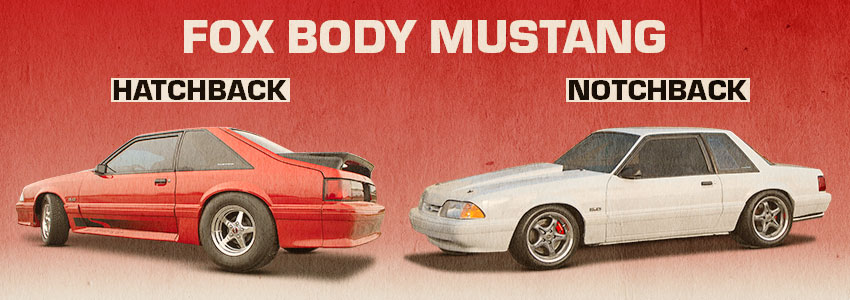
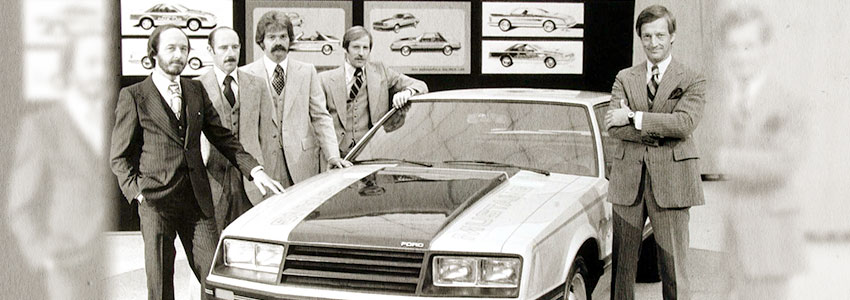
Jack Telnack: Father Of The Fox Body Notchback And Hatchback
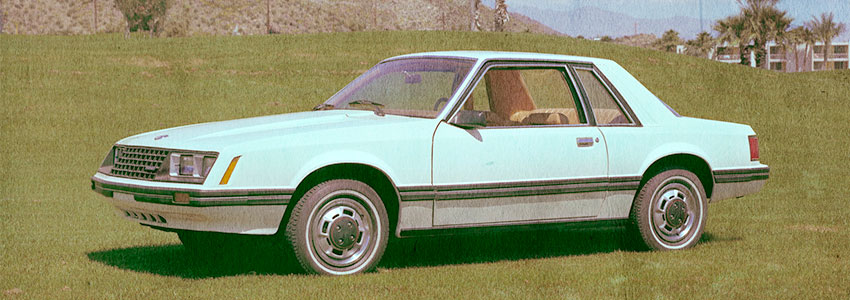
Fox Body Mustang Notchback vs Hatchback
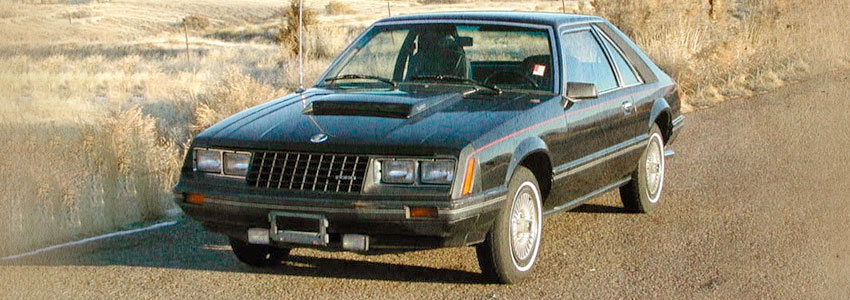
Mustang Notchback and Hatchback Carryover

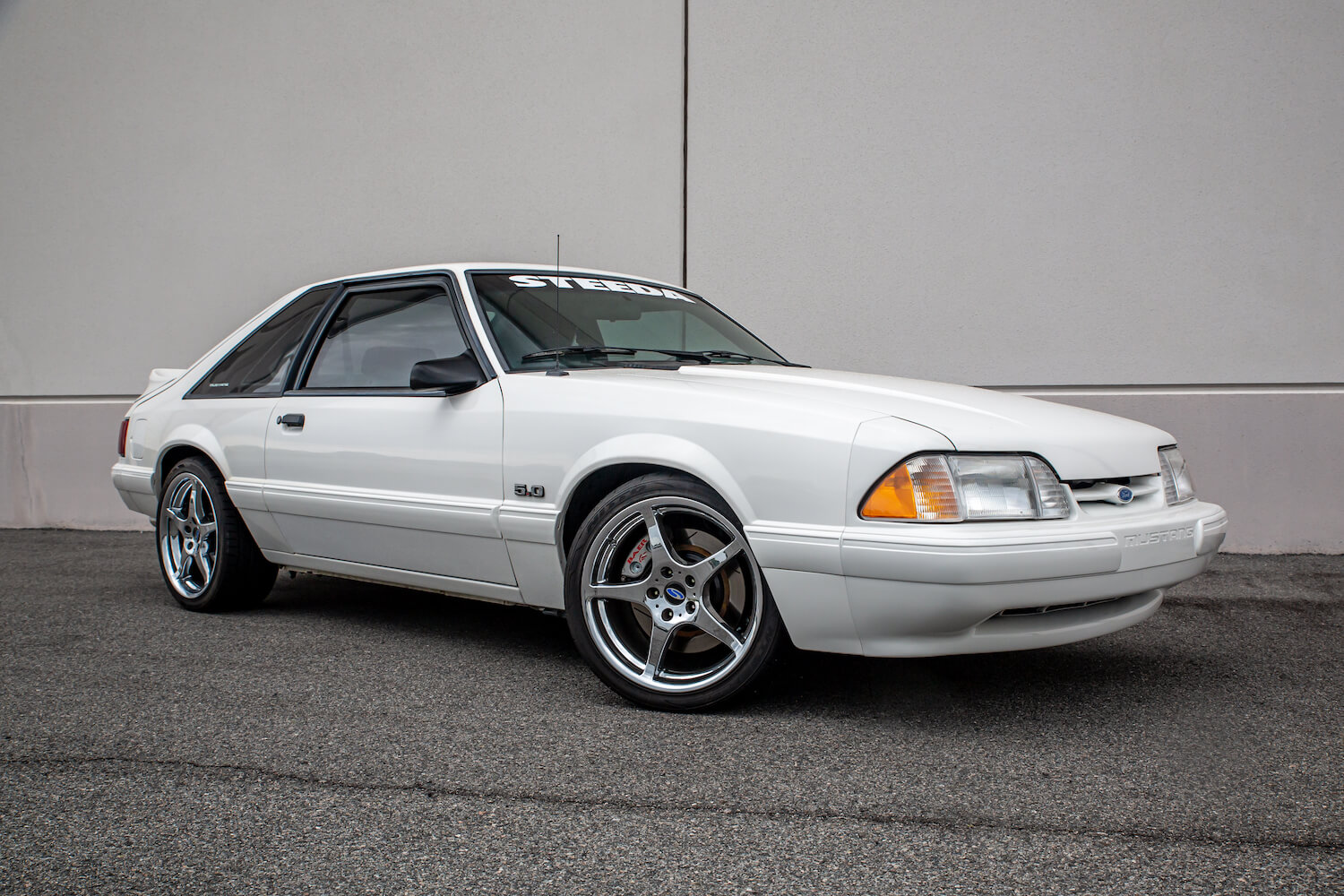

The Mustang Takes A Few Steps Back And A Few Step Forward
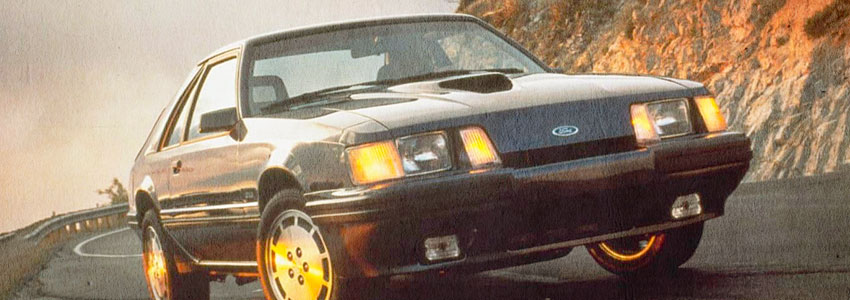
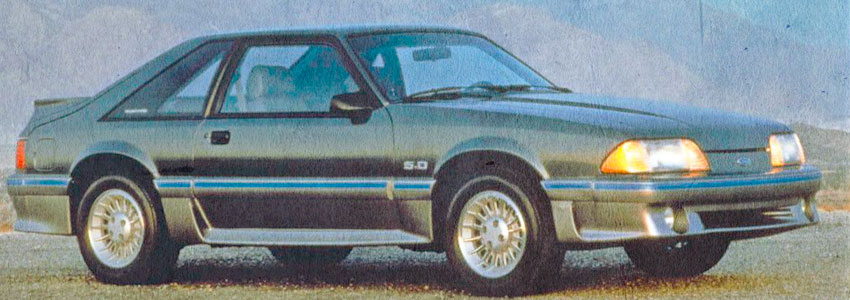
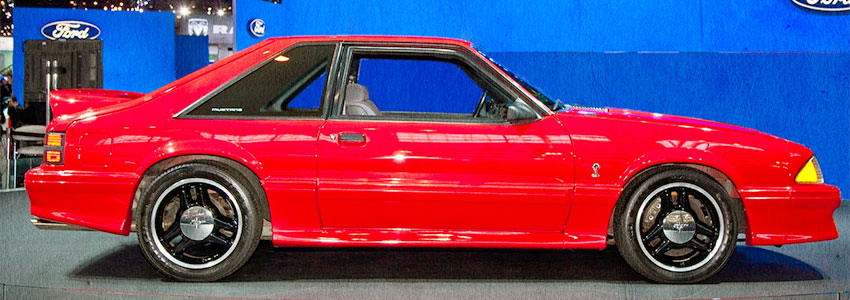
The Fox Body Enters Its Final Years
Related Articles




